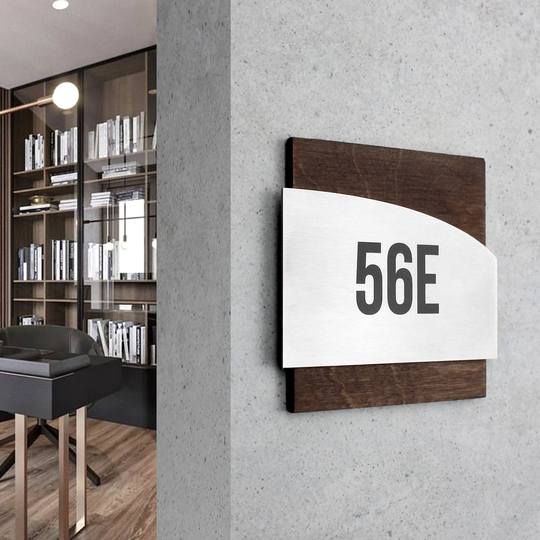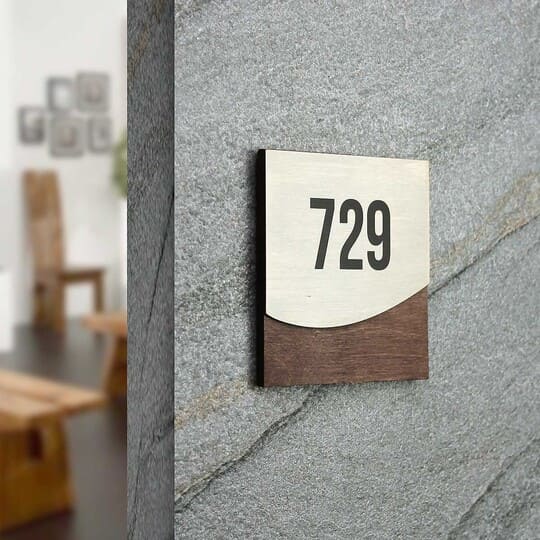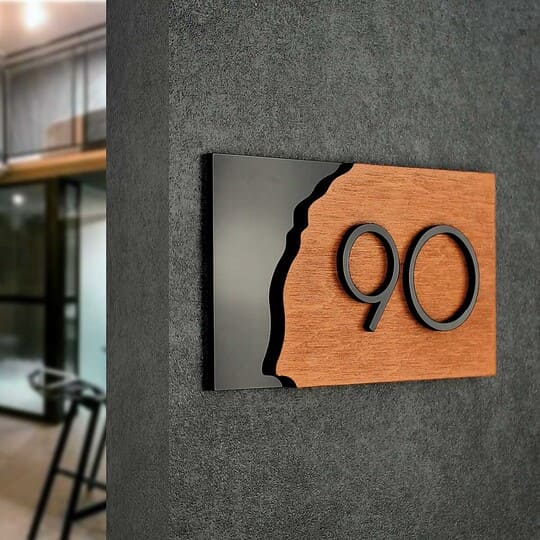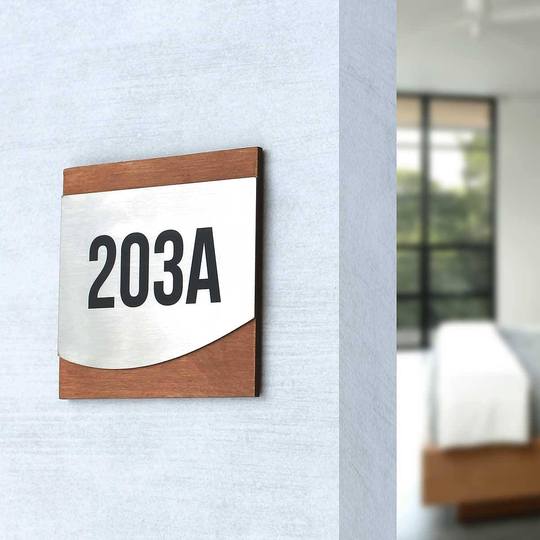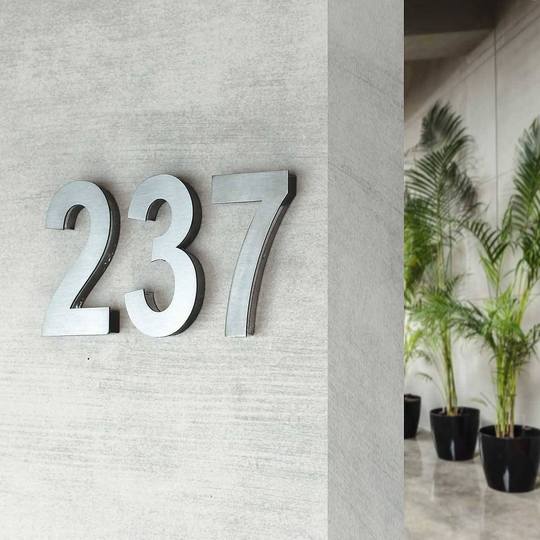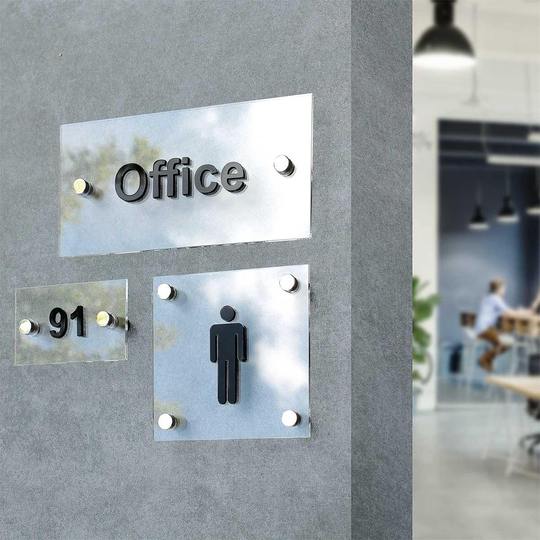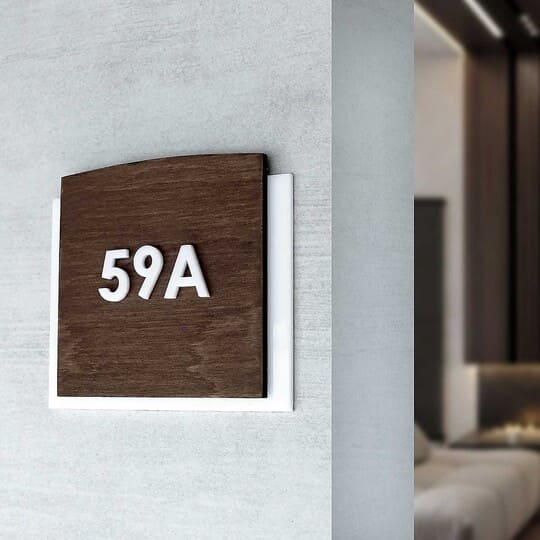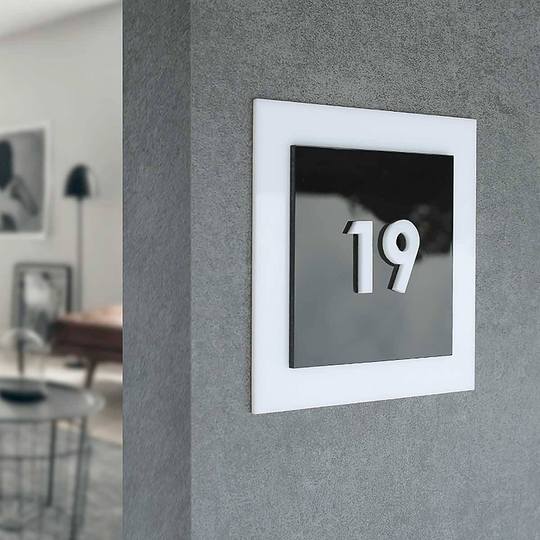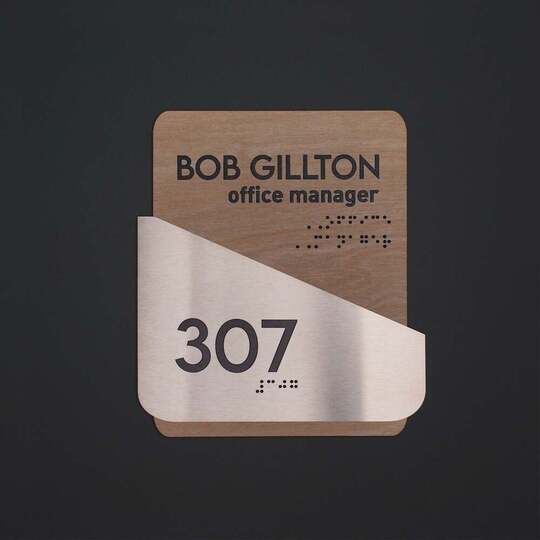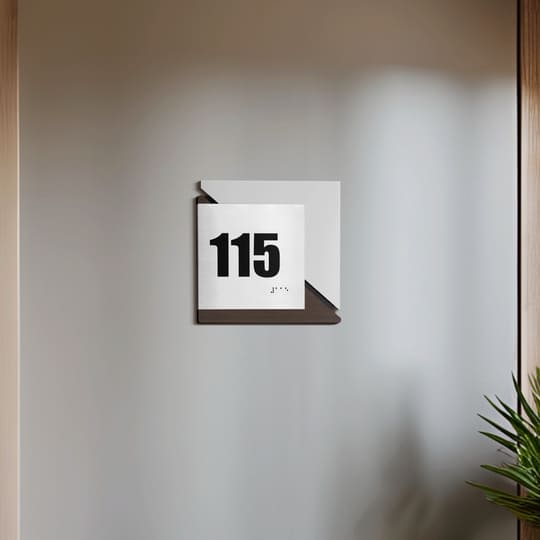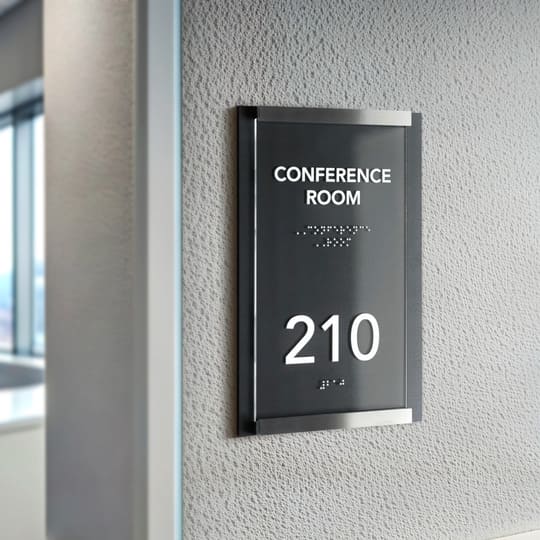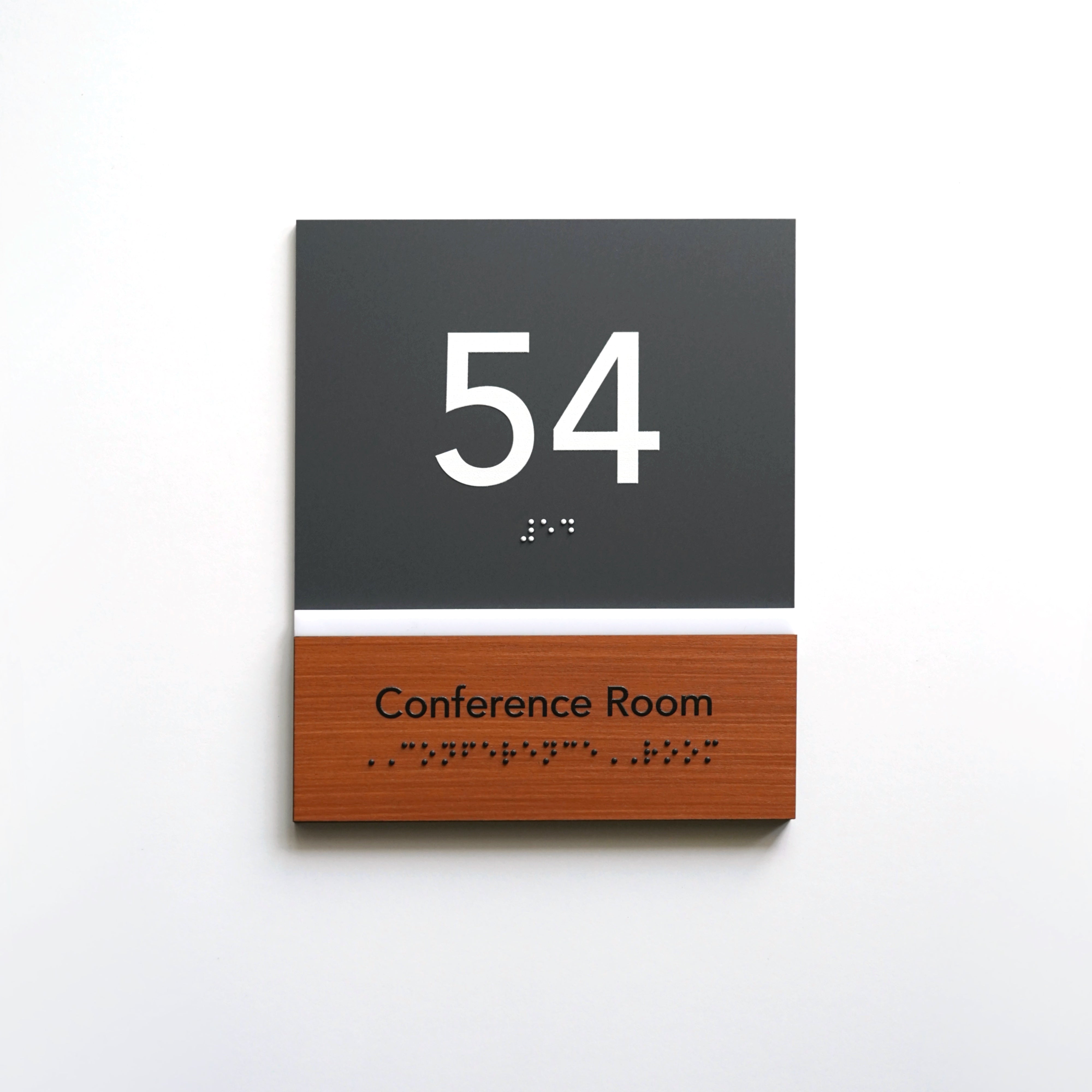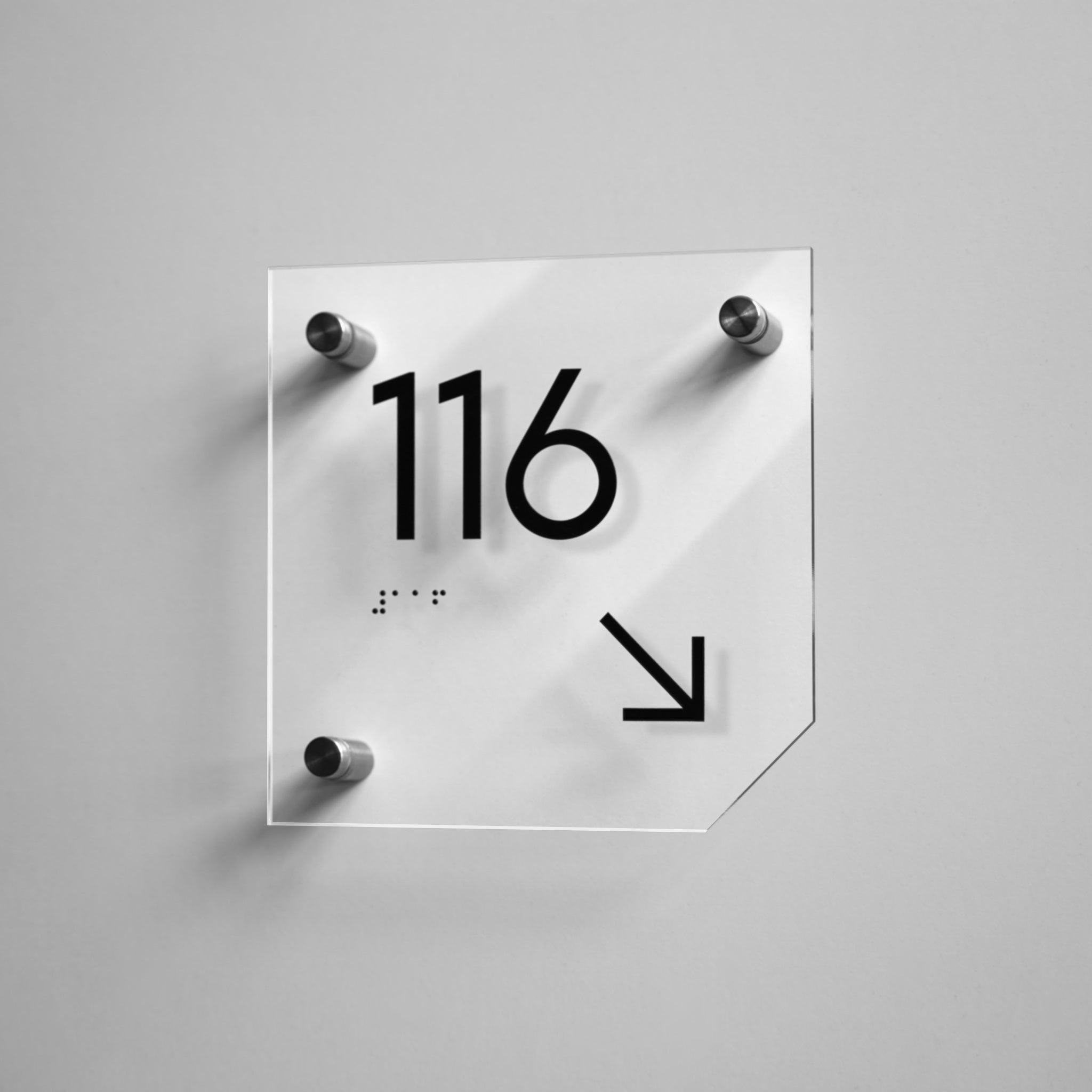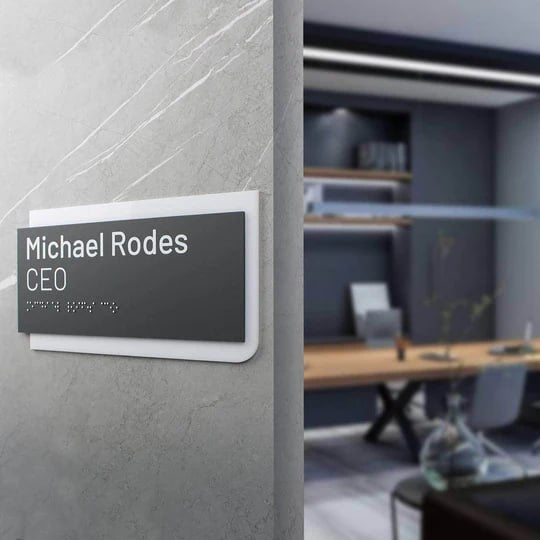
Minimalist design: How to Follow It by Choosing the Signs
Fashion is cyclic, one trendy design comes after another, but there is something long-lasting which is always up-to-date. Minimalism in the interior is a timeless design. This will always have a winning look, and it is easy to renew and choose decor for it. In this article, we will explain how to build a brand's visual identity in a minimalist style by choosing the appropriate signs.
Principles and essential elements of minimalism style
Elegant simplicity, spaciousness and functionality with a limited set of design elements are the key points of minimalism. This style embodies clean spaces and evokes a sense of peace and harmony.
Learn about the most critical aspects of minimalism to add attractive and practical aesthetics to your home or business space.
- Quality before quantity. Minimalism prefers natural and high-quality materials. Wood, glass, acrylic, metal, and stone are often used to add elegance and discreet luxury to the interior.
- Decluttering. Hidden storage systems are used in minimalist interiors to avoid visual noise. This allows you to maintain order by keeping unnecessary elements out of sight.
- Free space. Leave empty areas in the interior to visually expand the space. Instead of multiple small ornaments, preference is given to one or two significant accents.
- Functionality. Each item in the interior should have a function. Decorative elements are minimized or completely removed unless they have a practical purpose.
- Limited color palette. Neutral colors such as white, gray, black, shades of beige, and natural tones are used in the interior. Some extra bright accents can be carefully added.
- Light as decor. Lighting in minimalist interiors plays a crucial role as it emphasizes architectural features and creates an atmosphere. Therefore, in addition to overhead lighting, it is wise to add floor lamps, table lamps, and other elements.
Read our article on why you should choose minimalistic signs and numbers.
According to the minimalist approach, the interior should be free of clutter, while the room should remain lively, cozy, and practical. A common challenge when choosing minimalism is to avoid a boring and unremarkable look of the rooms. After all, this can hinder the brand image.
Decor will help you solve this problem. Now we will tell you how Bsign signs can complement your interior and create memorable impressions without overloading the room.
Choose your minimalist signage design from Bsign
Thin

This sign design can be the finest work in our assortment. An ideal option for those businesses and premises which strive to stick to minimalist style and complement the rooms with elegant signs. No wonder this design is one of our bestsellers. Thin signs are made of acrylic and are presented in white, black, silver, and gold colors. And their sizes vary from 10 to 20 cm (3.9"-8").
Simple

Next, we will consider «Simple» signs. This minimalist signage design consists of larger and smaller squares in white and black with a number or text in the middle. This universal design, which embraces simplicity and captures viewer's attention, will complement any style. This minimalist sign design ensures clear communication without being «screaming» in the interior.
Modern

These signs are very similar to the Simple design, but have one important difference. Being made of acrylic, they also include a metal part. The content of the sign is easily comprehensible and the visual aspect adds a business aesthetic to the minimalist style.
Classic

Thanks to their transparency, signs in the Classic design expand the space better than any other decor items. The base of the signs is made of transparent acrylic, while the numbers and text are in black. The plate fastening is metal. Nothing more, just essential information, style and minimalism.
Besides the above-mentioned designs, Bsign has other wooden signs that will be an excellent addition to most rooms, as they are discreet and stylish at the same time. See the Downhill, Wave, Jure, Venture, Buro and others in our extensive catalog.
Bsign signs design as an accent in minimalism
Genova

If you are looking for signs that stand out in a minimalist interior, then the «Genova» design is what you need for several reasons. The base of the signs is made of high-quality wood, available in 6 different colors. The sign has acrylic inserts as well, presented in 8 different colors. Thus, you can choose the look of the accented item in the room thanks to various settings. This decor will have a maximum impact on brand recognition and memorization.
In our blog, we tell the details of signage production in Bsign.
Authentic

Authentic signs have a palette of 6 colors and several benefits. This design stands out by unique shape. The metal part of the sign is carved, thus has an ornament of clean lines. This signage is perfect for creating a lasting impression, as it can capture attention and contribute to the overall branding.
Creative

Another ideal option for accented decor is the «Creative» design. These signs are the most flexible of all, and have an attractive look and an interesting shape as well. They are made of two materials: metal, available in 6 colors, and acrylic in a basic silver color and 11 other colors. You can choose a more restrained version of the «Creative» design or add brightness to the decor in the style of minimalism.
You can read more about these and other signs in our blog. If you are ready to make your choice, see the full catalog of our signs.
Conclusions
Overall design in a minimalist style greatly depends on the important details. That's why at Bsign, we ensure that each client can make a great choice for their home or create a strong brand identity. Whatever the style of your decor, we are here to help you find the perfect sign option. Contact us for a free consultation.

